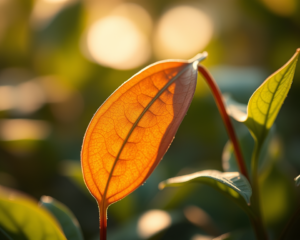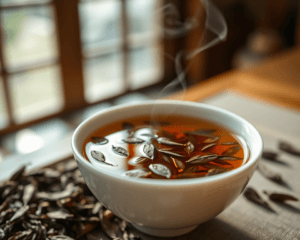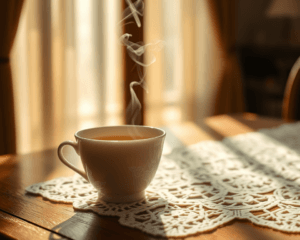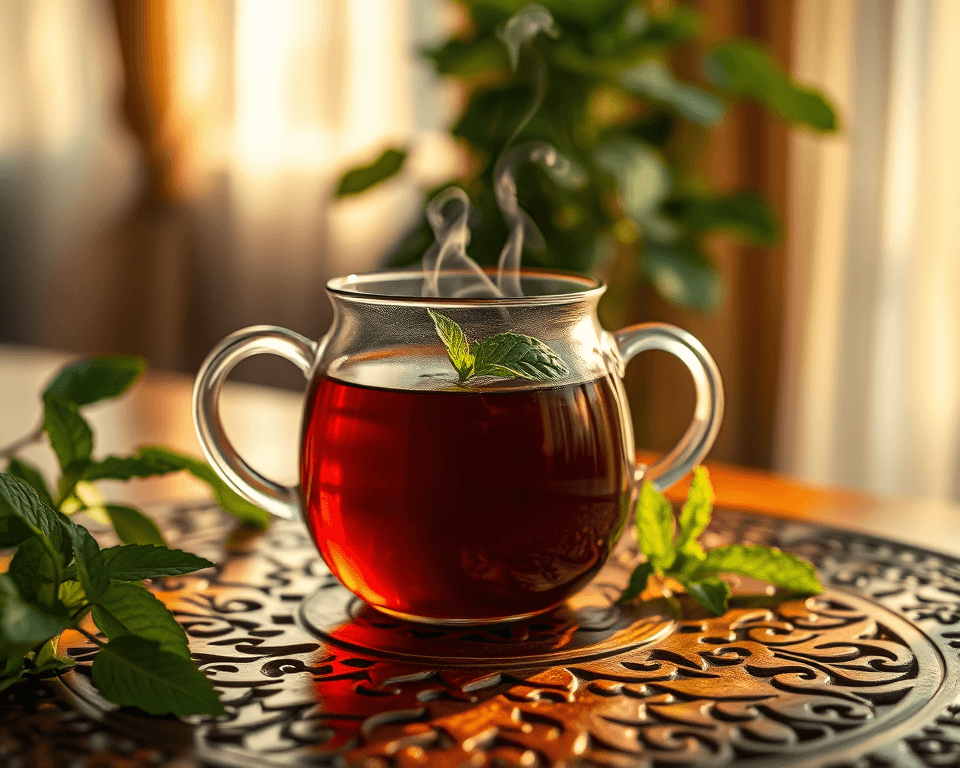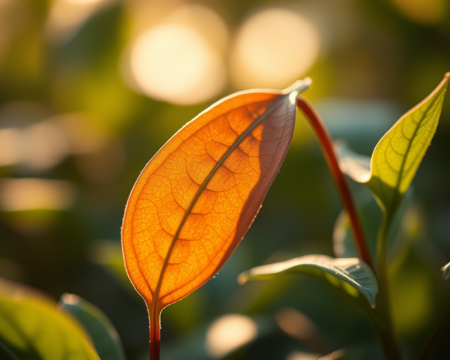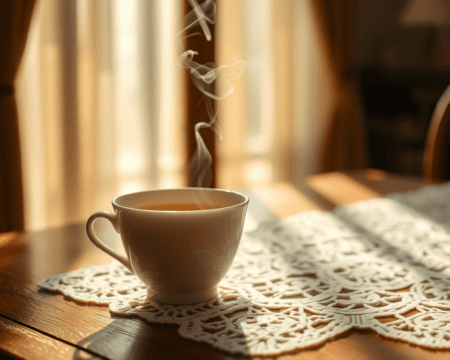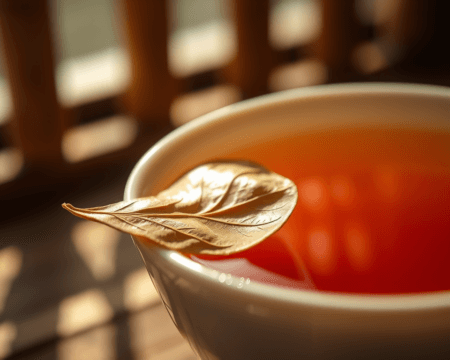Ah, tea! It’s more than just a beverage; it’s an experience, a craft, a celebration. Brewing tea with loose leaves is an art that takes just a bit of knowledge and a sprinkle of patience. Whether you’re swaying toward a robust black tea to kickstart your morning, a refreshing green tea in the afternoon, or a calming herbal tea before bed, the world of loose tea leaves offers a tantalizing variety with rich flavors and aromas that bagged tea just can’t match.
Key Takeaways:
– Loose tea leaves offer a broader flavor spectrum and superior quality compared to tea bags.
– Different tea types require specific brewing techniques for optimal taste and benefits.
– Key tools include a tea infuser and a kettle with temperature control.
– Avoid common brewing mistakes, like over-steeping or using the wrong water temperature, for the perfect cup.
Understanding Loose Tea Leaves
Different Types of Tea Leaves and Their Flavors
Let’s kick things off by exploring what makes up loose tea leaves. We’re talking about black tea, green tea, oolong tea, and herbal tea. Each type has its own flavor profile and aroma that sets it apart. Black tea is bold and hearty, perfect for your morning rush. Green tea is lighter and grassy; it’s great if you want a refreshing sip with a hint of caffeine. Oolong? Well, it straddles the line—partially oxidized, it’s got floral notes that can warm the heart or invigorate the mind. For you herbal fans out there, herbal tea isn’t even a “true” tea; it’s caffeine-free and can be a delightful combo of flowers, fruits, and herbs.
Sounds good, right? Understanding these tea varieties isn’t just for fun—it helps you choose the right tea for your mood or needs. When you know the flavor profiles of these teas, you’ll appreciate how they can complement your lifestyle.
The Cultural Significance of Tea in Various Regions
Now, let me tell you—tea isn’t just a drink. It’s a cultural cornerstone in many regions. Think of British afternoon tea with its crumpets and biscuits or the elaborate tea ceremonies in Japan emphasizing mindfulness and respect. In India, chai spiced with cardamom is as much a ritual as it is a beverage. People come together, stories are shared, and traditions are passed down, all centered around tea. Understanding the cultural practices surrounding tea can enrich your own brewing experience, turning it into a moment of connection rather than just rote preparation.
Preparing to Make Tea from Loose Leaves
Tools and Ingredients You’ll Need
To get started, you’ll need the right tools. Grab yourself a good tea infuser. My go-to is the Fine Mesh Steeper—it ensures all that flavor comes through without getting overwhelmed by loose leaves floating around. A sturdy teapot is also crucial. I swear by my Stainless Steel Teapot; it keeps the tea warm and looks sleek on the table. You’ll also want a measuring spoon because we don’t play guessing games in tea preparation—precision is key. And don’t forget about your kettle. A Brewista Variable Temperature Kettle is great because it allows you to set the perfect temperature for each type of tea.
Now, let’s talk about water. The quality of water is often overlooked but matters so much. Using filtered water elevates the taste of your tea and prevents any funky flavors that tap water might introduce.
Tips on Water Temperature and Quality
Now let’s make sure we’re steeping correctly! Did you know that different teas prefer different water temperatures? For a black tea, crank up the heat to around 200°F—boiling, baby! Green tea? Aim for a cooler 175°F to preserve those delicate flavors. Oolongs usually like the mid-range at about 185°F. Herbal tea is pretty forgiving; you’re looking at around 200°F here too.
Using quality water can drastically improve your brew. Soft water tends to draw out flavors better than hard water, which can leave your tea tasting flat. So go for filtered or spring water whenever possible. Yes, you’re putting in the effort now, but the results will have you basking in tea greatness.
Step-by-Step Instructions for Brewing Tea
Infusing Loose Tea Leaves
When it comes to infusing, measure out around one teaspoon of loose tea per cup of water. This can vary a bit based on personal taste and the tea itself. If you’re using a lighter tea like silver needle white tea, you can go a little heavier since those delicate leaves expand nicely. Place the leaves in the infuser, pour in that just-right temperature water, and watch the magic happen.
Steeping times vary too: Black tea loves a solid 3 to 5 minutes, green tea should only steep for 1 to 3 minutes, and oolongs can go for about 5. Herbal teas thrive with longer steeping times, generally between 5 to 7 minutes. Set a timer and resist the urge to keep poking at it—trust the process!
Common Mistakes to Avoid When Brewing Tea
Listen, I’ve made my fair share of mistakes in the tea game. Here’s what you need to avoid if you don’t want to ruin your brew:
- Never over-steep! This can turn your delightful tea into a bitter disaster faster than you can say “Earl Grey.”
- Always use the right water temperature—not hot enough and the flavors are muted, too hot and you just burned your leaves.
- Don’t skimp on your tea quantity! A mediocre tea experience is not what you’re after.
Remember, the goal here is to find the sweet spot for your taste buds. Take notes on your preferences so you’ll get it just right next time.
Exploring the Nuanced Flavor Profiles of Different Tea Leaves
How Different Leaves Affect Taste and Aroma
The magic of tea lies in the flavor characteristics. Imagine? With each type of leaf, you’re tasting the terroir of its origin—the soil, climate, and even the harvest season play into its unique taste nuances. For example, a Darjeeling black tea from India might present muscatel notes that delight your senses, while a lush Chinese green could burst with sweet grassy flavors. The flavor wheel is your best friend here; get familiar with it to understand what each tea offers.
Your sense of smell is a big deal too! The aroma can set the stage for your tasting experience, triggering not just flavors but memories and feelings. So take the time to sniff your tea steeping—breathe it in!
Health Benefits of Various Types of Tea
Don’t sleep on the health benefits too. Black tea is laden with antioxidants that help fend off free radicals, while green tea is noted for its weight-loss properties due to its ability to speed up metabolism. Oolong is handy for reducing stress, and herbal teas—those are your go-to for relaxation. Chamomile, for instance, is the queen of calming teas.
Understanding the medicinal properties of these teas can empower you to make choices that support your health and well-being. Want to stave off a cold? Get that echinacea tea brewing. Need an energy boost? It’s time for matcha!
Sustainable and Environmentally-Friendly Tea Practices
Loose Tea vs. Tea Bags
Look, we know bagged tea has its convenience, but let’s get real about the environmental impact. Loose leaf tea shines here. By opting for loose tea, you’re not just getting higher quality; you’re also reducing waste. Many tea bags are made with synthetic fibers that don’t break down easily. Plus, they often contain less tea than you’ll find in a scoop of loose leaf. Go ahead, level up your tea game and support eco-friendly practices!
Supporting Fair Trade in Tea Production
If you want to sip with a conscience, consider seeking out fair trade tea options. With brands like Numi Organic Tea and Rishi Tea, you’re not just getting a stellar brew; you’re supporting ethical practices and farmers getting fair compensation for their hard work. It’s about making choices with purpose. When you buy tea, you’re investing in lives and communities. Feeling good about your brew has never been easier.
It’s time to stop settling for mediocre tea. Embrace the process, experiment, and really savor what you’re drinking. You’re about to embark on a delicious journey with loose tea leaves, turning each cup into a compelling ritual to cherish. So gear up, grab your tools, and let the tea adventures begin!
Frequently Asked Questions
What are the benefits of using loose tea leaves over tea bags?
Loose tea leaves offer superior flavor and freshness compared to tea bags, allowing for a more nuanced taste experience. They typically contain whole leaves, which provide more essential oils and antioxidants, enhancing both aroma and health benefits.
How can I store loose tea leaves to keep them fresh?
To preserve the freshness of loose tea leaves, store them in an airtight container, away from light, moisture, and strong odors. A cool, dark place, such as a pantry, is ideal for maintaining quality.
Can I reuse loose tea leaves for multiple brews?
Yes, many loose tea leaves can be reused for multiple brews, particularly oolongs and green teas. However, the flavor may diminish with each subsequent steep. Generally, you can re-steep leaves 2-3 times, depending on the tea type.
What is the best way to clean my tea infuser?
To clean your tea infuser, rinse it with warm water immediately after use to remove leftover leaves. For a deeper clean, soak it in warm, soapy water, then rinse thoroughly. Avoid using abrasive materials that could scratch the surface.
Are there specific health benefits associated with herbal teas?
Yes, many herbal teas possess unique health benefits. For example, chamomile tea is known for its calming properties, while peppermint tea helps relieve digestive issues. Always check individual tea types to understand their specific health benefits.
How do I know which tea to choose based on my mood?
Choosing tea based on mood involves understanding the characteristics of each type. Generally, black tea is energizing, green tea is refreshing, oolong is versatile, and herbal teas vary widely, offering relaxation or digestive support, depending on the blend.
What types of water are best for brewing tea?
Filtered or spring water is ideal for brewing tea, as it enhances flavor and avoids the chlorine or minerals in tap water that can affect taste. Soft water can help draw out flavors better than hard water.
Can I use loose tea leaves for cold brewing?
Absolutely! To cold brew, simply add loose tea leaves to cold water and let it steep in the refrigerator for several hours. This method extracts flavors delicately, resulting in a refreshing iced tea.
What are the environmental advantages of loose tea leaves?
Choosing loose tea leaves reduces waste, as many tea bags contain non-biodegradable materials. Additionally, loose leaf options often come from sustainable tea sources, supporting eco-friendly practices and helping to minimize your carbon footprint.
